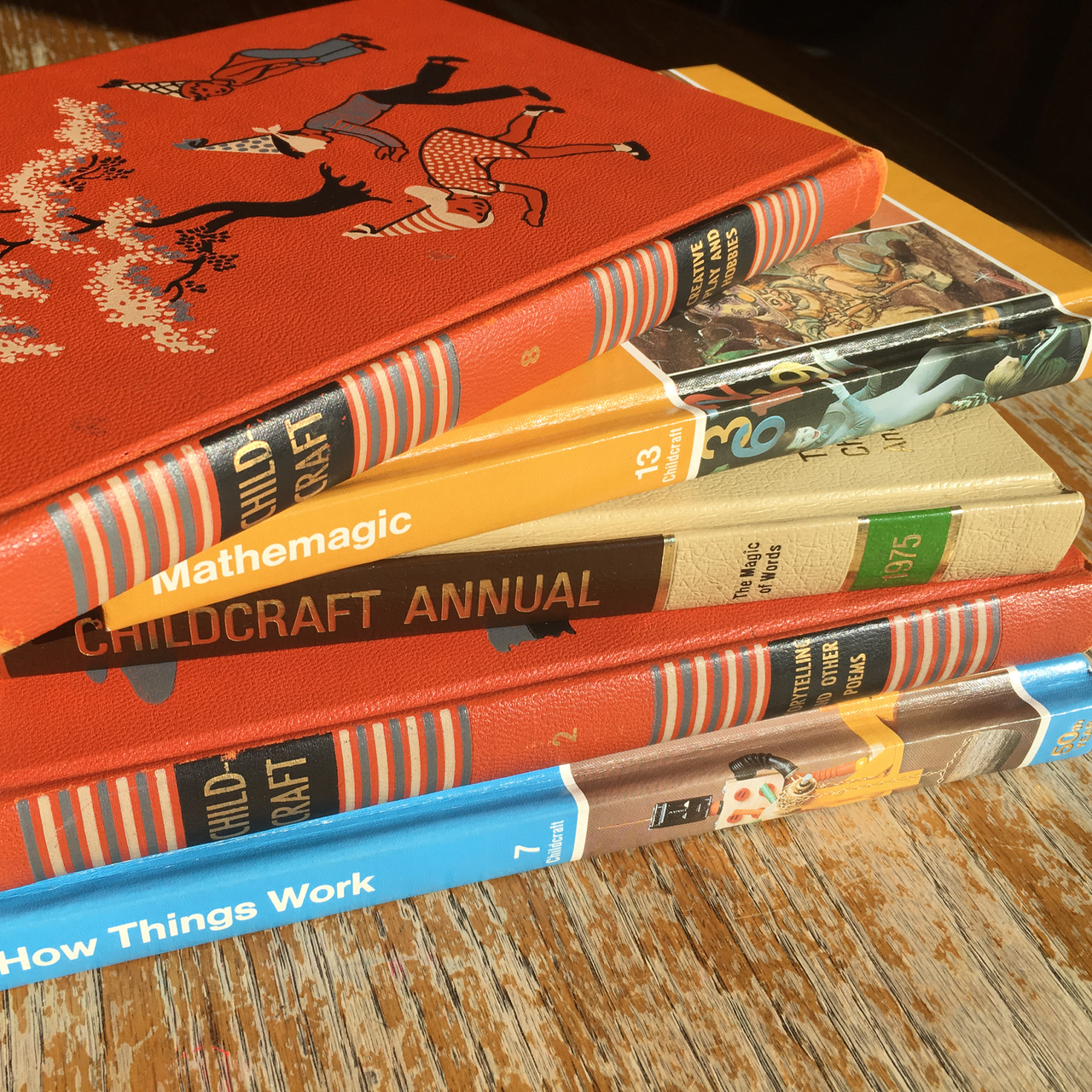 In my childhood home, we had a room called “The Library”. It was a beautiful room with dark wood built-in book cases and glass doors. It was always my favorite room in the house. My dad had a deep and lovely leather chair which was perfect for getting lost inside of a good book. My love for books was likely born in that room.
In my childhood home, we had a room called “The Library”. It was a beautiful room with dark wood built-in book cases and glass doors. It was always my favorite room in the house. My dad had a deep and lovely leather chair which was perfect for getting lost inside of a good book. My love for books was likely born in that room.
I remember being in elementary school and being tired of textbooks and lessons that were designed to elucidate my many weaknesses. I remember being baffled by the work that I had to do in order to prove that I wasn’t a fool. I remember feeling deeply insecure and always one misstep away from failure. I remember finding school incredibly stressful.
That library was a place of refuge for me. In it, I would let my insecurities and realities disappear as I got lost in stacks of old books. I would read and re-read Betsy and Tacy, wishing that I had been born in simpler times. I would read and re-read Little House on the Prairie, wishing that I could go on adventures that didn’t involve spelling lists and dreaded math worksheets. I also remember getting lost in Childcraft books, marveling at scientific and historical ideas that were not present in my traditional education.
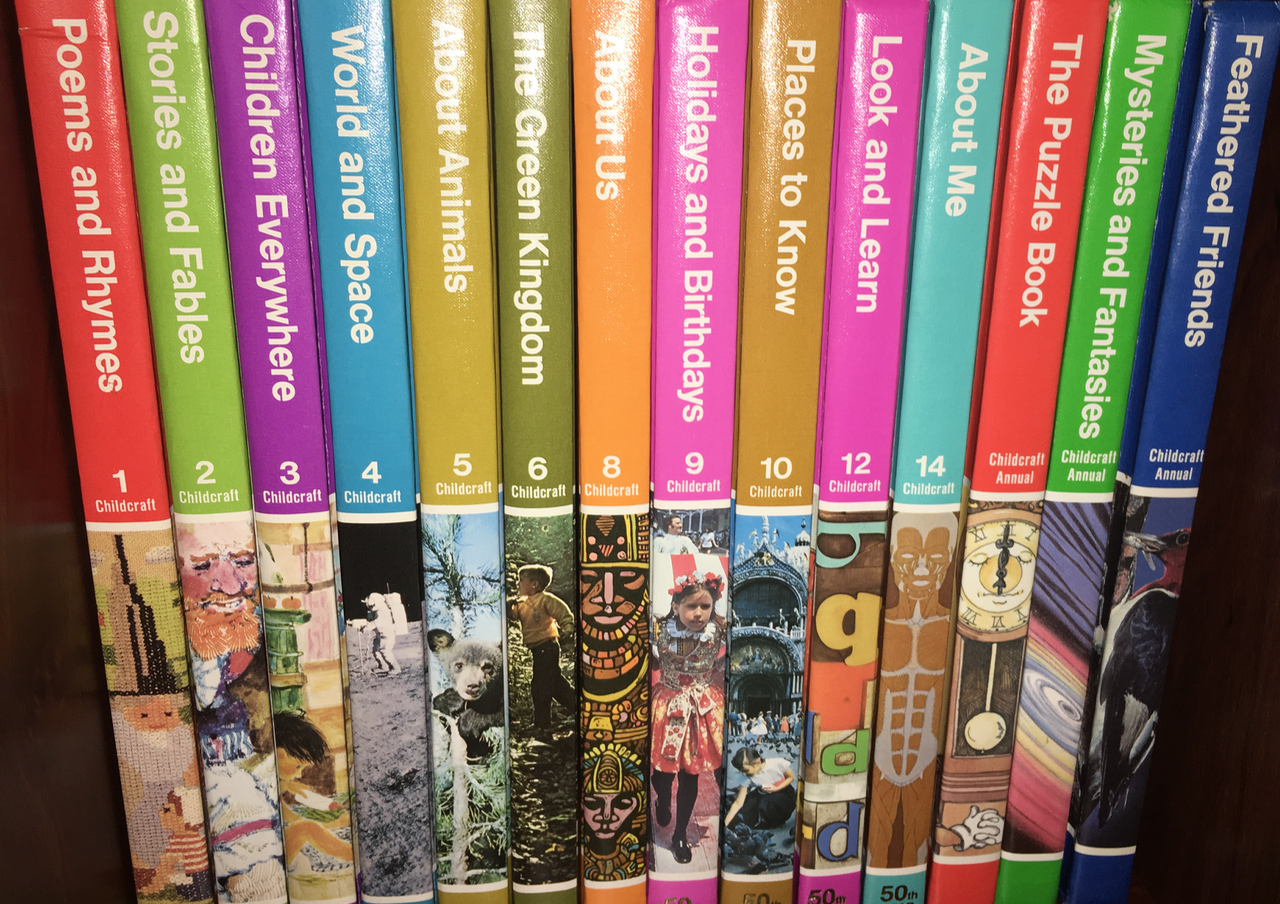
Decades later, a local librarian knew that I was homeschooling. Her recently deceased mother had been a Childcraft representative, and in her attic were some treasures that needed a loving home. I asked no questions. I gratefully received the boxes of Childcraft books. There were a few duplicates that I shared with other friends and a couple of holes which I would enjoy filling. I was elated. My kids looked on with wonder and enthusiasm as I rejoiced over these precious books!
“In the early 1920’s, W. F. Quarrie & Company, publishers of a ten-volume encyclopedia called The World Book, was also selling a new educational plan known as the The Foundation Desk and Library. It consisted of a child’s desk – complete with secret drawer – and two books, a Guide and a Work and Play Book. The desk was the big item – the books went along for good measure.” Introduction to 1984 Childcraft Volume 1: Poems and Rhymes
In no time at all, it became obvious to the publishers that the desk was of far less value than the books themselves. Throughout the 1920s and 1930s, the publishers experimented with different volumes and different ideas about what to include. In 1934, the first edition of Childcraft was published. It included three volumes for children to read independently and three volumes for parents or teachers.
In 1940, the Quarrie Company was commissioned to do a massive overhaul of The World Book. In December of 1945, Marshall Field III purchased the Quarrie Company and both The World Book and Childcraft became part of Marshall Field Enterprises. For early re-branding, the series remained closely connected to it’s previous form. Field, however, wanted an entirely new series under the same name and with similar intention but broader scope.
In 1949, after WWII, the first Field Childcraft was published. This 14 volume set included 12 subject-based volumes and had 2 large format special volumes (Art & Music and Science & Industry). This edition, however, was just a build-out of the original series. It was bigger and richer but it was still more or less the same idea as that of the Quarrie Company.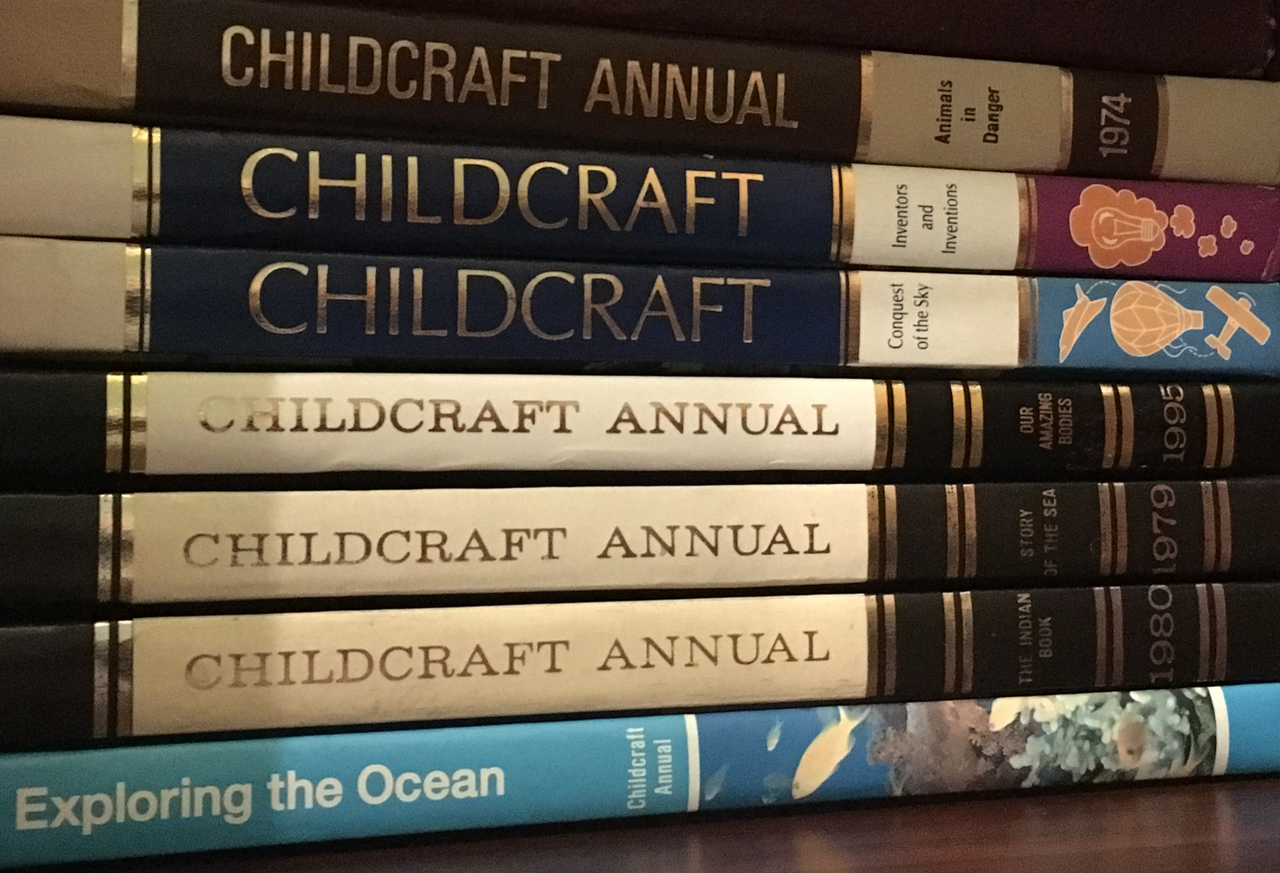
In 1954, Field overhauled Childcraft and published the first new series with a total of fifteen volumes. J. Morris Jones, Editor in Chief, was not willing to stop there. He knew that the post-war culture was changing the world and he wanted a series which embraced the new world. In 1964, Childcraft was completely re-invented, again. The older series focused more on the preservation of culture. The newer series focused more on education, training, and the broadening of the minds of post-war children. Both series have great value and it is for this reason that I have chosen to have both series in my home. They bear the same name but they cover completely different territory – even when the volumes are closely related titles.
Over the course of an upcoming series of articles, I will try to give you a peek into the 1949 series as well as the post-1964 series. I will try to show how I use these in our homeschool in vital ways.
It is my contention that nearly all early elementary education can be supported by Childcraft and very little else. When young moms ask me what they can do to get started in homeschooling (or enhance the traditional school experience their children have), I always say: get the Childcraft books and enjoy reading them together.
Moms have asked how to read through Childcraft. Is it best to use it as an encyclopedia and read it like a reference resource, or is it best to read it like a storybook? Truly, it is set up for you to do either. In our experience, however, it has been best to pull whichever volume we wish to study, and read it from start to finish in a two-page spread, a couple of times per week. There is a progression of ideas inside each self-contained volume.
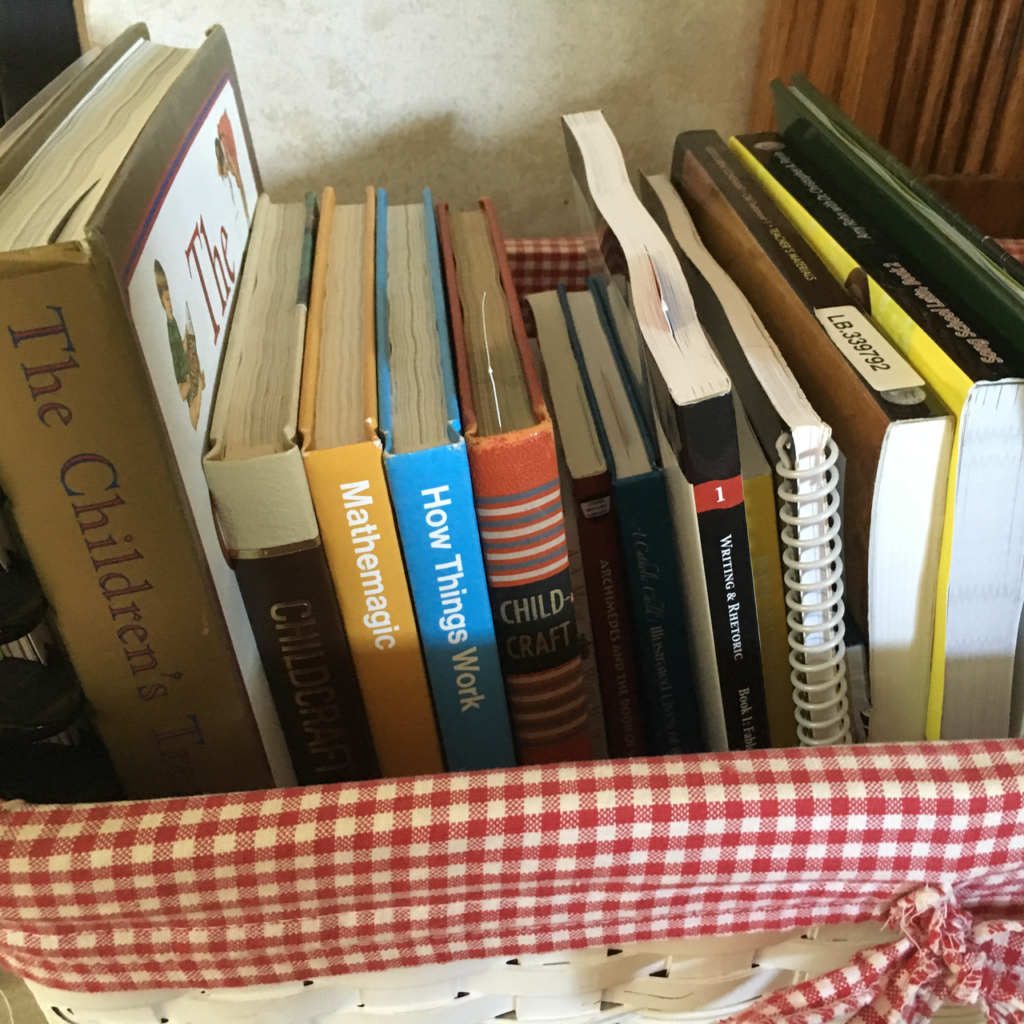
I add whichever Childcraft volume(s) we will use to our morning symposium basket and loop them throughout the week. At any given time, we will likely have 2 or 3 Childcraft volumes in our morning loop.
As an example, we read from Mathemagic (in our 1984 50th Anniversary edition, it is volume #13) once or twice a week. We cover approximately 2-4 pages per week. At this rate, it takes an entire school year to get through Mathemagic. But, reading this way, much math gets through us. This gentle and intentional approach helps us to love mathematical ideas and develop a body of knowledge that makes math practical for the rest of our lives.
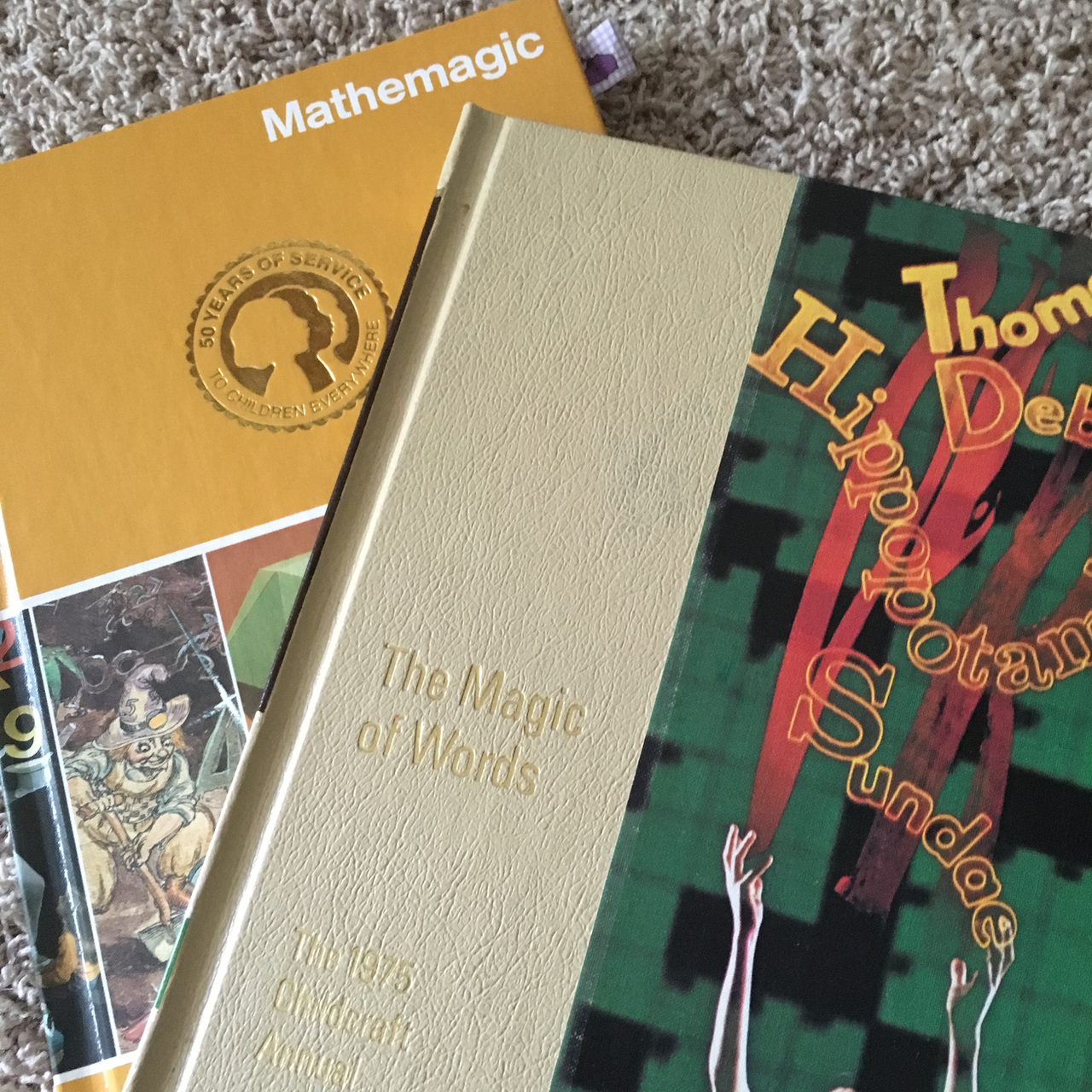
In the next post in this series, I will unpack the Mathemagic volume and share some photos of the insides. It is one of my most favorite Childcraft books. If your budget allows the purchase of only one volume, this would be a brilliant one to start with.
To see which other Childcraft volumes we have reviewed, check out this tag. If you are curious about the orange Childcraft, check out this page. We have some big plans to revise, update, and organize these in the summer of 2023.
These look fantastic. If you could only have one edition, which would you choose?
Margi, I think that it depends on your intention. If you are looking to have a library of classic Western literature, go with the older series – the original Childcrafts that are orange. If your intention is to foster education in your home, then you cannot beat the relaunched version. I have the 1984 series in particular and it is my favorite for balance of volumes.
The post-1960s versions are very dynamic school subjects presented dynamically.
The pre-1960s reboot are lovely, lovely, lovely illustration and compilation of poetry, fables, literature, etc.
My oldest is only two, but I’ll have to take a look at these. I was homeschooled too. We didn’t have these growing up, but we had an old multi-volume encyclopedia from the 1980s someone gave my parents (this was the early 2000s) that we all used to just read for fun. Definitely a big part of my education. 🙂
These are so much fun. I love them. My kids love them. They are all about wonder and awe! 🙂
I have the 1984 childcraft set. At what age would you recommend starting the Mathemagic book?
Hi Amy! I did Mathemagic as a read aloud with my children when they were 4, 6 and 8. The 4 year old didn’t get tons out of it, but he knows that the 6 and 8 year olds loved it. I find CC books all over the house because my kids had such a fun and exciting introduction to them that they all view them as being really fun and meaningful.
I found a calendar type Childcraft magazine. It is about 72 pages long and is themed by all 12 months. The first page starts, : “January with Childcraft” Each page has several articles, which all end on a cliff-hanger. At the end of each article, in parenthesis, is where to find the remainder of the article in the Childcraft encyclopedia sets. Unfortunately, the cover is missing. Is there anyway of determining what year of books this magazine is referring? I would love to send a picture if anyone is interested in giving it a look.
Fascinating! If you send me some pictures, I would love to see what I can find out. You can PM us at our FB page or you can email Sara at gregandsaramasarik (at) gmail (dot) com.
I love these! I was not homeschooled, but I did grow up with a set of Childcraft books (I think from the 70s) and they’re a large part of why I grew up loving books. When I was a teen, my parents gave them away in a misguided attempt to reduce clutter. I mourned, I tell you! Last year I came across a set from the 80s, complete and in great condition, for a mere $20 at Goodwill. I snatched them up. I look forward to sharing them with my kids.